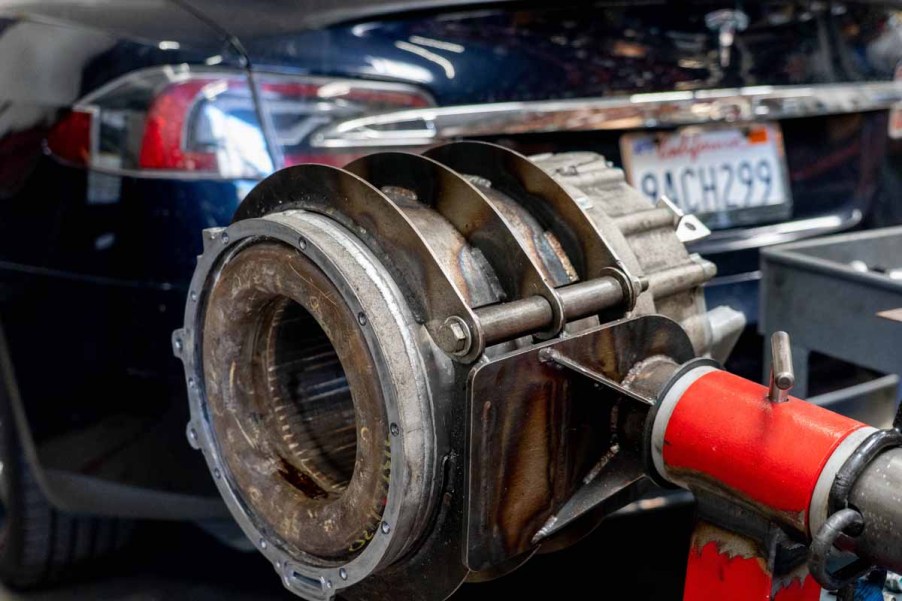
Tesla Motor Problem Could Lead to Seized Motor, but This EV Shop Has a Fix
Though it may be hard to believe, the first Tesla Model S production models rolled out to customers over a decade ago. While many EV owners tout that they have no maintenance and no issues, that’s not exactly true. In fact, there is one major fault that older Tesla drive units (that’s what they call the motors) experience from time to time. This Tesla Motor Problem, if left unchecked, can ultimately lead to failure of the drive unit. Fortunately, there is a solution.
Unfortunately, though, the solution requires dismantling the Tesla motor. You’ll be hard-pressed to find someone who is willing to do that. If you happen to live in or near Vista, California, though, you’re in luck. That’s where EV repair shop QC Charge is, and they aren’t afraid to dig into Tesla components.
What problems do Tesla motors have?

Alex Bessinger of QC Charge was kind enough to give me a tour of their shop and explain to us what problems we can expect to see with Tesla drive units. Furthermore, he goes on to explain the repairs and show the specialty tools they’ve developed for this process.
“These motors, in particular, have a couple of design flaws that decrease the reliability on them. The biggest one, in particular, is the coolant seal on the end of the rotor,” says Bessinger.
This is in reference only to the Tesla Large Drive Unit. These motors are the ones you’ll find in Model S and Model X Performance and rear-wheel drive models. They were also used in the Mercedes B-class electric and the Toyota RAV4 EV, which is QC Charge’s bread and butter.
“Those seals tend to wear out and fail…what happens is it will leak coolant inside the motor,” Bessigner continues.
He explains that this failure mode can cause catastrophic failure. Fortunately, QC Charge not only knows how to repair them, but it also offers a solution to prevent this exact scenario.
What does a Tesla need coolant for?

Tesla motors, like engines, get hot. Also, like engines, overheating them can cause detrimental failure. Though there’s no combustion happening within a Tesla motor like you’d find in an engine, circulating a liquid cooling agent throughout the component is an efficient way to keep it cool. Obviously, like with an internal combustion engine, coolant in places it shouldn’t be is a big problem.
So, what is the solution?
“If we do catch it before any damage has gone too far, oftentimes we can open them up, replace the seal, the bearings, and repair any defects that there might be in it, and then put it all back together.
Bessinger goes on to explain the company’s method for preventing this failure in the future.
“We add a drain kit so that any coolant that does leak into the motor has a way to escape instead of just pooling up inside,” he says.

So, if you’re in fear of your rear-wheel drive or performance Tesla having a detrimental motor failure, breathe easier knowing there’s a company that has a solution for you.
For more info on QC Charge and what services they offer, be sure to watch the video at the top of this article. The company repairs Tesla batteries, replaces EV motors and batteries, and even gave us an up-close look at a disassembled Tesla motor!



